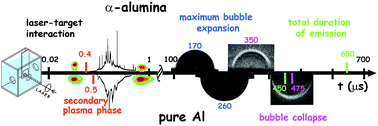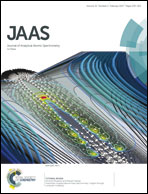Influence of the target material on secondary plasma formation underwater and its laser induced breakdown spectroscopy (LIBS) signal
Abstract
The goal of this study was to investigate whether a secondary plasma can be formed on a non-metallic target under water and to give insight into the related processes. The material of choice here was alumina, since its physical, thermal and mechanical properties are substantially different from those of pure Al, only for which secondary plasma formation was recently demonstrated. To achieve this, plasma and bubble formation on alumina under water after single pulse laser excitation were studied using fast photography, shadowgraphy, Schlieren and LIBS techniques. The results show that the secondary plasma caused by backward heating of the target and successive slow target evaporation into the growing vapour bubble also occurs for alumina. The secondary plasma formed on alumina involves only a narrow interaction region on the target resulting in an almost spherical plume shape. In contrast, on thermally conductive and easily melting/evaporating aluminium, the secondary plasma is intense, with a large volume which is flattened on the target surface. Inside the expanded bubble above the alumina target, glowing particles were not observed. Due to less efficient secondary plasma formation on alumina compared to aluminium, its optical emission only slightly increases at a delay of 400 ns from the laser pulse but emission persists during three bubble cycles with a total duration of about 650 μs. The LIBS spectra related to the secondary plasma are almost free from any continuum component and show narrow emission lines from low excited states. Here we discuss the observed differences in the plasma’s spatial, temporal and spectral evolution on the two considered target materials. The obtained results indicate that under water a secondary plasma might be formed on very different materials and that its detection produces a good quality LIBS signal from single pulse excitation using a commercial nanosecond laser source.


 Please wait while we load your content...
Please wait while we load your content...